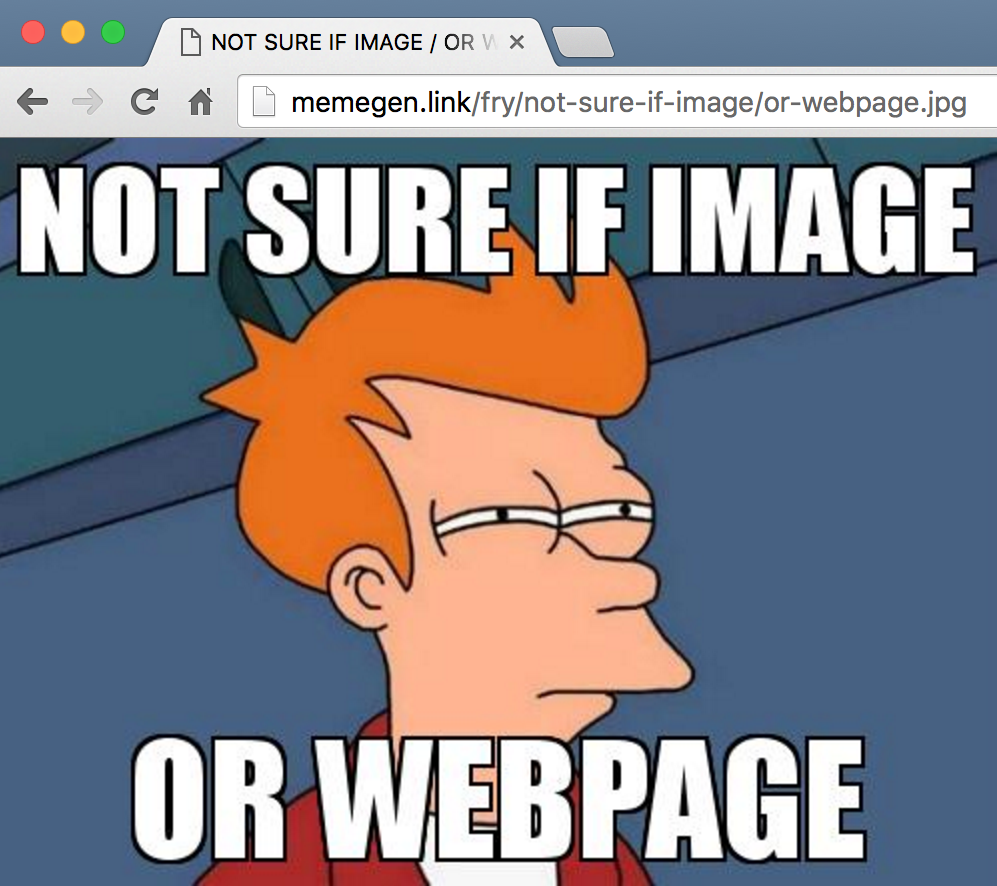Tracking Direct Image Requests with Google Analytics
24 Jan 2016Memegen.link is an open source meme generator. It renders meme images based on the requested URL.
For example, memegen.link/oprah/you-get-a-meme/and-you-get-a-meme.jpg produces this image:

The site also provides an API to generate memes. This article is about the legacy implementation written using Flask and Flask API.
Client-side Analytics
I have added Google Analytics to the index and API documentation pages using the standard approach of embedding JavaScript on the page:
...
<body>
<script>
... '//www.google-analytics.com/analytics.js','ga');
ga('create', '<Google Analytics ID>', 'auto');
ga('send', 'pageview');
</script>
</body>
...
And while this works great for HTML rendered in the browser, direct images requests (like the meme image above) go untracked.
Server-side Analytics
One solution is to track file downloads on the backend by posting to the Google Analytics API directly using an HTTP library like requests:
logging.info("Sending image: %s", path)
data = dict(
v=1,
tid='<Google Analytics ID>',
cid=request.remote_addr,
t='pageview',
dh='memegen.link',
dp=request.path,
dt=title,
uip=request.remote_addr,
ua=request.user_agent.string,
dr=request.referrer,
)
requests.post("https://www.google-analytics.com/collect", data=data)
return send_file(path)
While this will track page views for an image, much of the client’s information is still unavailable using this method:
- geographic location
- language setting
- device properties
Tricking Clients
My complete solution involves a bit of hack to return HTML instead of an image for clients that can handle it and the normal image for those that can’t.
Visit memegen.link/fry/not-sure-if-image/or-webpage.jpg in your browser:

It appears to be an image that can be downloaded:
$ wget https://memegen.link/fry/not-sure-if-image/or-webpage.jpg
Length: 27809 (27K) [image/jpeg]
Saving to: 'or-webpage.jpg'
or-webpage.jpg 100%[============================>] 27.16K 70.7KB/s
2016-01-24 20:51:46 (70.7 KB/s) - 'or-webpage.jpg' saved [27809/27809]
But if you view the network tab in Chrome’s developer tools, you’ll see that it actually loaded a small webpage to run the same client-side Google Analytics JavaScript as above:

This was accomplished by detecting what content types the client can accept:
mimetypes = request.headers.get('Accept', "").split(',')
if 'text/html' in mimetypes:
send_html()
else:
send_image()
If the client can handle HTML, the following is returned:
<!DOCTYPE html>
<html>
<head>
<title>NOT SURE IF IMAGE / OR WEBPAGE</title>
<style>
body {
background-image: url("/fry/not-sure-if-image/or-webpage.jpg");
background-repeat: no-repeat;
}
</style>
</head>
<body>
<script>
...
ga('create', '<Google Analytics ID>', 'auto');
ga('send', 'pageview');
</script>
</body>
</html>
This causes the browser to render the image as expected, but also run a bit of JavaScript to recored additional information about the client.
See a typo? Help me edit this post.
Interested in seeing the full implementation? Check out the code on GitHub.